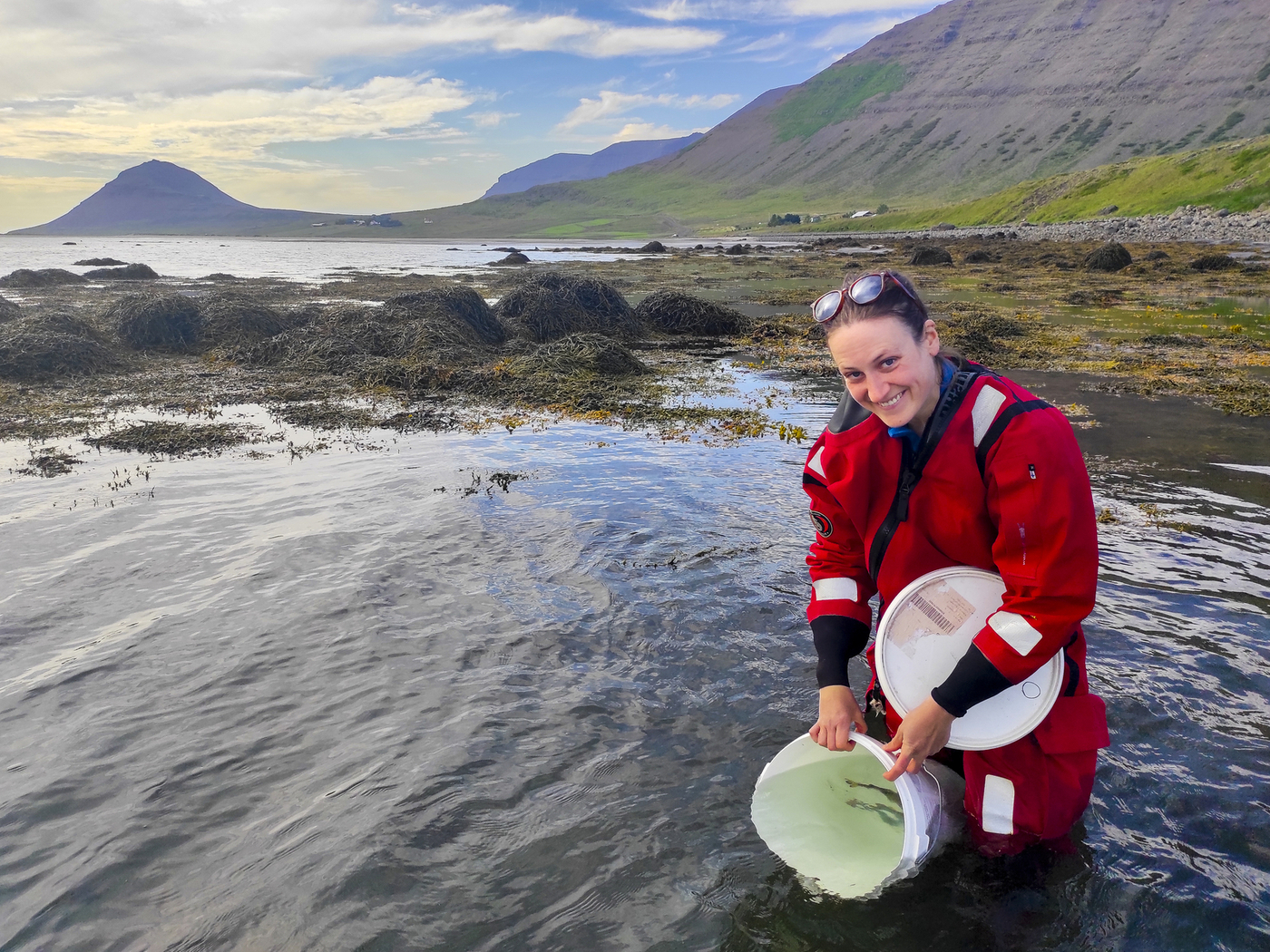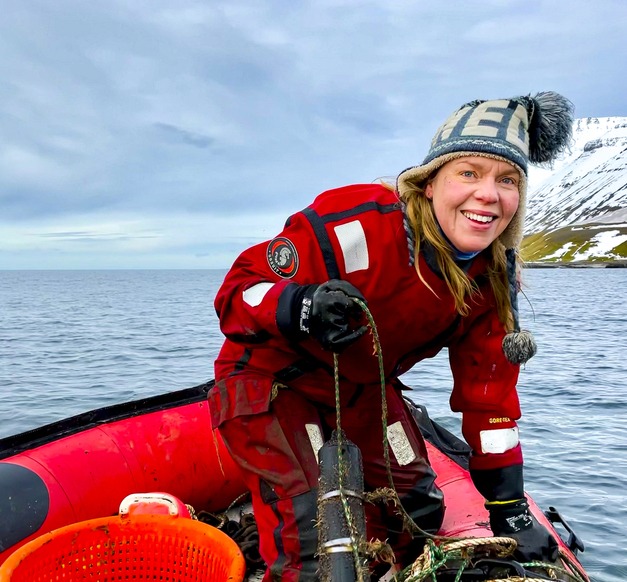
In the past, people did not see anything wrong with catching a lice infected salmon in freshwater. It was merely thought to be a sign that the fish had only recently come from the sea. But with the growth of salmon farming in marine pens off the coast of Iceland, salmon lice have acquired a different and much more negative significance.
"Fish biologists are often particularly concerned about the proliferation of salmon lice in farmed fish and the impact that this could have on wild salmonids. In the case of a bad infestation, the health and survival of wild fish may be affected. This means we need to monitor the number of lice in both the farmed fish and nearby wild fish to make sure that infestations are kept below a certain level."
So says Guðbjörg Ásta Ólafsdóttir, biologist and director of the University of Iceland Research Centre in Bolungarvík. Guðbjörg has conducted a wide range of research into marine ecosystems, including many projects linked to the industries and commercial fish stock vital to the Icelandic economy. For example, she has done a lot of research into the impact of climate change and human activity in coastal regions on juvenile whitefish in Ísafjarðardjúp. She has now turned her attention to sea lice. Salmon lice are one species of sea lice that can cause enormous harm when fish are crowded together.

How do salmon lice infestations in marine pens affect wild populations?
"Sea lice are small crustaceans that live as parasites on fish. The lice can be found in natural conditions but where fish are crowded together in one place they spread with particular ease and the lice population can often explode. So it's no surprise that lice often proliferate in and around marine pens."
Guðbjörg Ásta explains that the number of lice found on wild fish doesn't tell the whole story when investigating the scale and impact of the problem, because wild fish are able to rid themselves of lice in various ways.
"Salmon lice cannot tolerate freshwater or very low temperatures. Wild fish who become infected can therefore move into freshwater or colder water to get rid of the lice. But these changes in their movements can have serious consequences for the fish, because if their normal feeding migrations are disrupted, they lose important time that should be spent in the sea taking in nutrients and fattening up before returning to freshwater environments to spawn and spend the winter."
Guðbjörg's aim is to evaluate whether marine pens and lice infestations affect the movements and distribution of wild Arctic char and brown trout in nearshore habitats.
"I have always been particularly fascinated by the movements of fish and how environmental factors affect the distribution of fish populations. This project provides an opportunity to combine this interest with a practical approach, helping to build a theoretical basis for evaluating the environmental impact of aquaculture."
Guðbjörg and her team have had to start from scratch for this project, since there has been very little previous research into the distribution and movements of Arctic char and brown trout in Icelandic waters.
"This means we have already collected some very interesting basic data. We have also found clues suggesting that brown trout with serious lice infections stay in deeper waters than fish with milder infections. We don't yet know whether there is any causation here, though, because our sample sizes are still small."
"It is very important for a company that exploits natural resources to have a strong scientific foundation for that exploitation – the only way to build this foundation is through research. This particular research is an example of a project that will contribute a lot to basic scientific knowledge of Icelandic ecosystems, as well as supporting sustainable exploitation of natural resources."

Research that promotes sustainable exploitation of resources
The new Strategy of the University of Iceland, UI26, specifically addresses the University's links with industry with a focus on ensuring that learning and research meet the needs of Icelandic society and industry and promote a sustainable world. Guðbjörg Ásta explains that this project is indeed a collaboration with an aquaculture company operating here in Iceland, aiming to promote sustainable exploitation of natural resources.
But do the interests of research and industry always align? Guðbjörg Ásta says that, particularly in the case of this project, benefits are created not least through open and sincere partnerships between academia and industry.
"It can actually be in researchers' best interests to explore practical considerations. Companies also benefit from collaborating with scientists at universities, since they often approach a topic in a very different way. It is very important for a company that exploits natural resources to have a strong scientific foundation for that exploitation – the only way to build this foundation is through research. This particular research is an example of a project that will contribute a lot to basic scientific knowledge of Icelandic ecosystems, as well as supporting sustainable exploitation of natural resources."
Guðbjörg Ásta says that the project furthermore aligns with the UN Sustainable Development Goals, which emphasise the importance of conserving and using marine resources in a sustainable way. Sustainable marine aquaculture is also one of the targets for the SDG 'Life Below Water'. Guðbjörg says that the project also aims to support increased food security.
"Basic research like this is the foundation of new knowledge. Humans can build on this foundation to develop and respond to a changing world."


